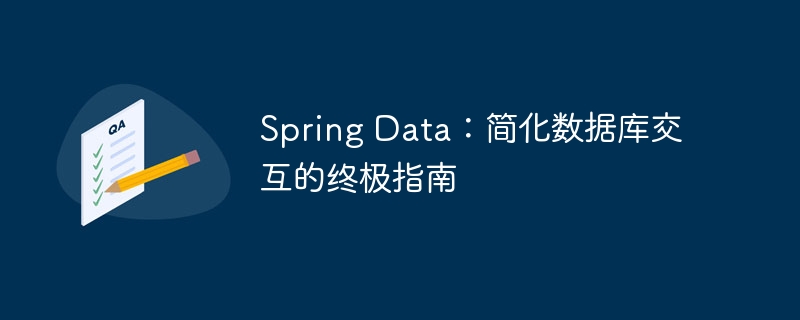

"Spring Data: The Ultimate Guide to Simplifying Database Interaction" carefully created by php editor Xiaoxin provides you with a detailed introduction to the comprehensive use of the Spring Data framework. This guide covers various database operation tips and best practices to help developers easily simplify database interaction and improve work efficiency. Whether you are a beginner or an experienced developer, you can get practical tips and knowledge to make database operations more efficient and convenient.
Main Features
Instructions
Using Spring Data mainly involves the following steps:
Advantage
Using Spring Data provides the following advantages:
Example
The following is an example using Spring Data JPA:
@Entity
public class User {
@Id
@GeneratedValue
private Long id;
private String name;
private String email;
}
public interface UserRepository extends JpaRepository<User, Long> {}
@Service
public class UserService {
@Autowired
private UserRepository userRepository;
public List<User> findByName(String name) {
return userRepository.findByName(name);
}
}In the above example, we defined an entity class User, a data repository UserRepository and a service class UserService. The UserService class uses the data repository to find users in the database.
Best Practices
Best practices for using Spring Data include:
in conclusion
Spring Data is a powerful framework that simplifies interaction with databases by providing an abstraction over data repositories. By using Spring Data, developers can focus on application logic, increase productivity and keep code simple.
The above is the detailed content of Spring Data: The Ultimate Guide to Simplifying Database Interactions. For more information, please follow other related articles on the PHP Chinese website!
 What does DOS operating system mean?
What does DOS operating system mean?
 How to shut down after running the nohup command
How to shut down after running the nohup command
 What is the difference between pass by value and pass by reference in java
What is the difference between pass by value and pass by reference in java
 Solution to garbled characters when opening excel
Solution to garbled characters when opening excel
 Domestic free ChatGPT encyclopedia
Domestic free ChatGPT encyclopedia
 How to upload html
How to upload html
 How to connect php to mssql database
How to connect php to mssql database
 Why does vue.js report an error?
Why does vue.js report an error?
 There are several types of php arrays
There are several types of php arrays




